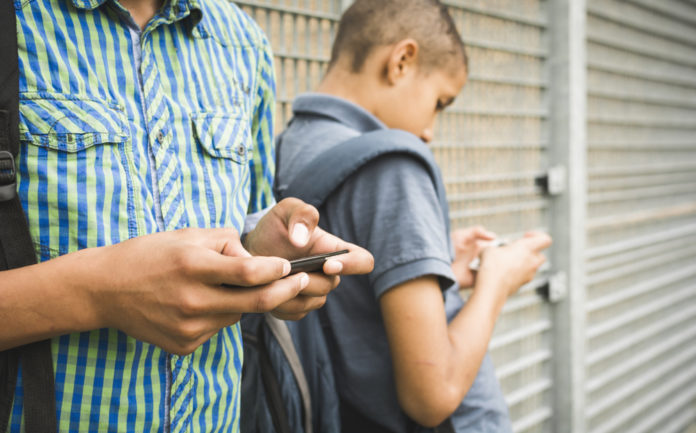Part II: The Trouble with Social Media
True fact, teens are spending more than one third of their day using media such as video or music on their phones. According to Common Sense Media, a technology education group, that’s nearly nine hours a day on average. Talk about a lack of productivity! It makes me wonder what the long term effect will be, scholastically speaking, on the lives of our teens in the future.
It is a commonly understood fact in a Dean’s world that students can be extremely creative when it comes to hiding their phones when they are not supposed to be using them. They can be equally elusive with what they are using them for. Each October, the Administration holds an open meeting inviting all Junior parents to attend. As part of that meeting, Brother Gary discusses some of the issues that teens get themselves involved regarding the use of their phones. Recently, I spent some time researching the current phone trends and behaviors that are occupying so much of our teens’ time. Below is list of commonly found Apps that our students may be using that can be construed as dangerous or inappropriate. Please review.
- Yellow – The app allows users to connect with a quick swipe. Once they’re connected, Yellow users can swap messages and even pictures — similar to the popular dating app Tinder. Except it’s primarily used by teens.
- Party in my Dorm – The description reads: “Join a club and find a party, or just chill and chat with cool girls and boys. You can be whomever you want as long as you like to have fun!” Police say a teen who went missing earlier this year and was later found in Massachusetts was using this app to communicate with the man with whom she was found.
- Snapchat – The app is popular because you can send a photo that disappears after 10 seconds. But kids may not realize someone can screenshot the picture and keep it forever.
- KIK – A local 15-year-old girl was abducted in 2015 by a man she met on this app. KIK let’s users chat, text and share photos. A lot of kids and teens are using this app because you can be anonymous and there are no texting limits.
- What’s App – WhatsApp lets users exchange unlimited text, audio, photo and video messages over the Internet, so you might not see an increase in data on your bill, even though your child is texting more often.
- Omegle – This app allows users to talk with strangers via video. The app picks a person at random and the users talk one-on-one.
- Calculator% – It’s a photo sharing app disguised as a calculator. Anyone who starts this application looks as a calculator but if you put in passcode it will open up a private area.
- Vaulty – Allows users to hide videos and photos.
- Musical.ly – It seems innocent enough. The app allows users to create and share their own lip-synced videos. But some kids say they’ve received inappropriate messages from predators.
- Finstagram – This may be number 10, but it might as well be number one, as it is the most commonly used way to disguise social media. This one is NOT an app. But parents should still be aware. Think you’ve seen your child’s Instagram account? They may have a second one. Some teens are setting up ‘Finstas’ where they showcase their real lives.
So then, an expected response from a parent is to say, “OK, what am I supposed to do with this information?” That’s easy. Have a serious discussion with your child about the dangers of using some of these social media apps and remind them of the anonymous predatory nature of people in the world today. If you’re comfortable enough – sneak a peek at your child’s phone to see exactly what they are doing. Truthfully, failure to take any action is neglectful. Sadly, we have discussions about cyber bullying and the inappropriate use of social media with our students, on a daily basis. As a parent, chances are you have already had these same discussions with your child. If you haven’t, it’s never too late to get started. In today’s society, it’s a required part of parenting. Good luck!!
For more information regarding suspicious apps, check out the following article:
Another quick read regarding the testing of a vape:
Vaping using concentrated THC on the rise, Nassau police say | Newsday







